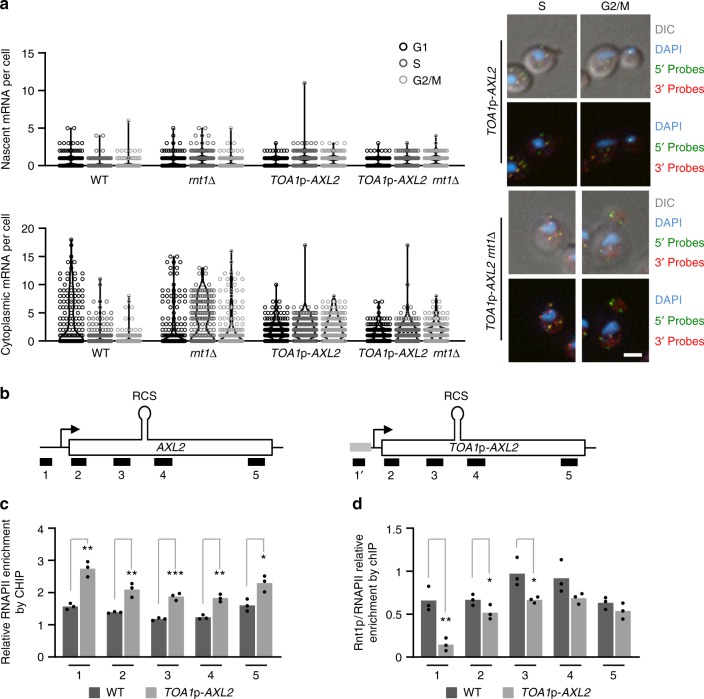Fig. 7.
The cell cycle-dependent degradation of Axl2 mRNA is induced by its promoter. a The promoter of AXL2 is required for Rnt1p-dependent repression of gene expression. The abundance of Axl2 mRNA was monitored in wild type or rnt1∆ cells expressing AXL2 from its own promoter (WT and rnt1∆) or a heterologous promoter (TOA1p-AXL2 and TOA1p-AXL2 rnt1∆). The mRNA was quantified as described in Fig. 1c and is shown on the left while examples of cells captured in S and G2/M phases are shown on the right. White bar equals 2 µm. b Schematic representation of the AXL2 locus depicting the position of the different fragments amplified by qPCR after chromatin immunoprecipitation. The position of the RNA target Rnt1p cleavage site (RCS) is shown at the top and the TOA1 promoter is indicated by a gray box. The probe specific to the substituted sequence is indicated by 1′. c The promoter substitution increases the association of RNAPII with the AXL2 locus. The RNAPII association pattern was examined in wild type cells (WT) or cells expressing AXL2 from a heterologous promoter (TOA1p-AXL2) as described in Fig. 6c. d Substitution of the AXL2 promoter inhibits the recruitment of Rnt1p to the AXL2 locus. Rnt1p association with the AXL2 locus, expressed from a wild-type or heterologous promoter, was examined as described in Fig. 6b with primers for amplicon 1 specific to the AXL2 or TOA1 promoter as required. Shown is the enrichment of Rnt1p relative to RNAPII. The bar graphs represent the average values obtained from 3 independent biological replicates shown as dots. Asterisks indicate significant difference between strains (*p < 0.05, **p < 0.01, ***p < 0.001 by two-tailed unpaired t test)

